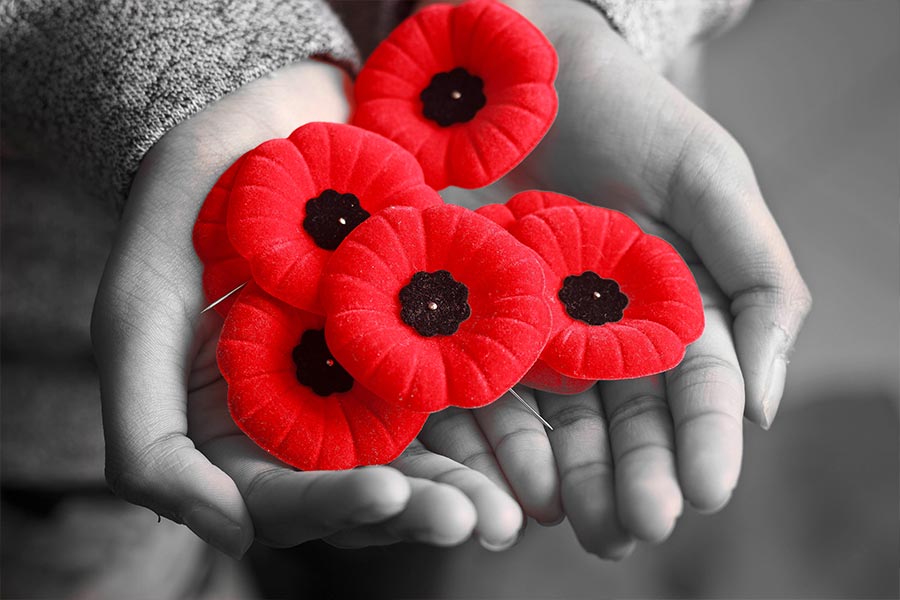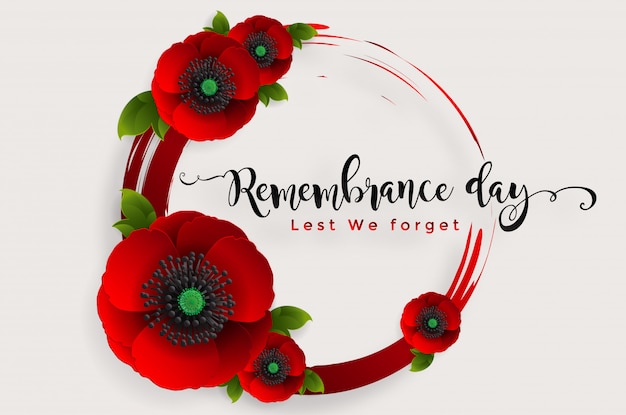
Some 87,000 Allied soldiers were killed, wounded or went missing in the battle (as well as 37,000 on the German side) a friend of McCrae’s, Lieutenant Alexis Helmer, was among the dead. McCrae tended to the wounded and got a firsthand look at the carnage of that clash, in which the Germans unleashed lethal chlorine gas for the first time in the war. Lieutenant Colonel John McCrae, a Canadian who served as a brigade surgeon for an Allied artillery unit, spotted a cluster of poppies that spring, shortly after the Second Battle of Ypres. As Chris McNab, author of “The Book of the Poppy,” wrote in an excerpt published in the Independent, the brilliantly colored flower is actually classified as a weed, which makes sense given its tenacious nature. But in the warm early spring of 1915, bright red flowers began peeking through the battle-scarred land: Papaver rhoeas, known variously as the Flanders poppy, corn poppy, red poppy and corn rose.

From the devastated landscape of the battlefields, the red poppy would grow and, thanks to a famous poem, become a powerful symbol of remembrance.Īcross northern France and Flanders (northern Belgium), the brutal clashes between Allied and Central Powers soldiers tore up fields and forests, tearing up trees and plants and wreaking havoc on the soil beneath. The Great War, as it was then known, also ravaged the landscape of Western Europe, where most of the fiercest fighting took place. The RSL sells millions of red cloth poppies with proceeds going towards raising funds for welfare work.From 1914 to 1918, World War I took a greater human toll than any previous conflict, with some 8.5 million soldiers dead of battlefield injuries or disease. They are an exact replica in size and colour of the poppies that bloom in Flanders’ Fields. Today, cloth poppies are sold on, or around, 11 November each year. Firstly, in memory of the sacred dead who rest in Flanders’ Fields. Secondly, to keep alive the memories of the sacred cause for which they laid down their lives and thirdly, as a bond of esteem and affection between the soldiers of all Allied nations and in respect for France, our common battleground. "The Returned Sailors and Soldiers Imperial League of Australia and other Returned Soldiers Organisations throughout the British Empire and Allied Countries have passed resolutions at their international conventions to recognise the Poppy of Flanders' Fields as the international memorial flower to be worn on the anniversary of Armistice Day.”Īustralians wear a Red Poppy on Remembrance Day for three reasons. The League adopted the idea in 1921, announcing: The Red Poppy was adopted as that emblem and since then has been accepted as the Emblem of Remembrance. In England in 1919, the British Legion sought an emblem that would honour the dead and help the living. In soldiers’ folklore, the vivid red of the poppy came from the blood of their comrades soaking the ground. Worn on Remembrance Day (11 November) each year, the red poppies were among the first to flower in the devastated battlefields of northern France and Belgium in the First World War. The Red Poppy has special significance for Australians.



What is the significance for Australians? At the second battle of Ypres in 1915, when in charge of a small first-aid post, he wrote in pencil on a page from his despatch book, a poem that has come to be known as 'Flanders' Field' which described the poppies that marked the graves of soldiers killed fighting for their country. McCrae vented his anguish by composing a poem. He was buried in the cemetery outside McCrae's dressing station, and McCrae had performed the funeral ceremony in the absence of the chaplain. A young friend and former student, Lieutenant Alexis Helmer of Ottawa, was killed on 2 May. Whilst serving in the First World War, one death in particular affected the then Major McCrae. Trooper Pulanco places a red poppy next to the names of the cavalry soldiers killed during World War Two at the Australian War Memorial.Ĭanadian Colonel John McCrae first described the Red Poppy, the Flanders’ poppy, as the flower of remembrance.


 0 kommentar(er)
0 kommentar(er)
